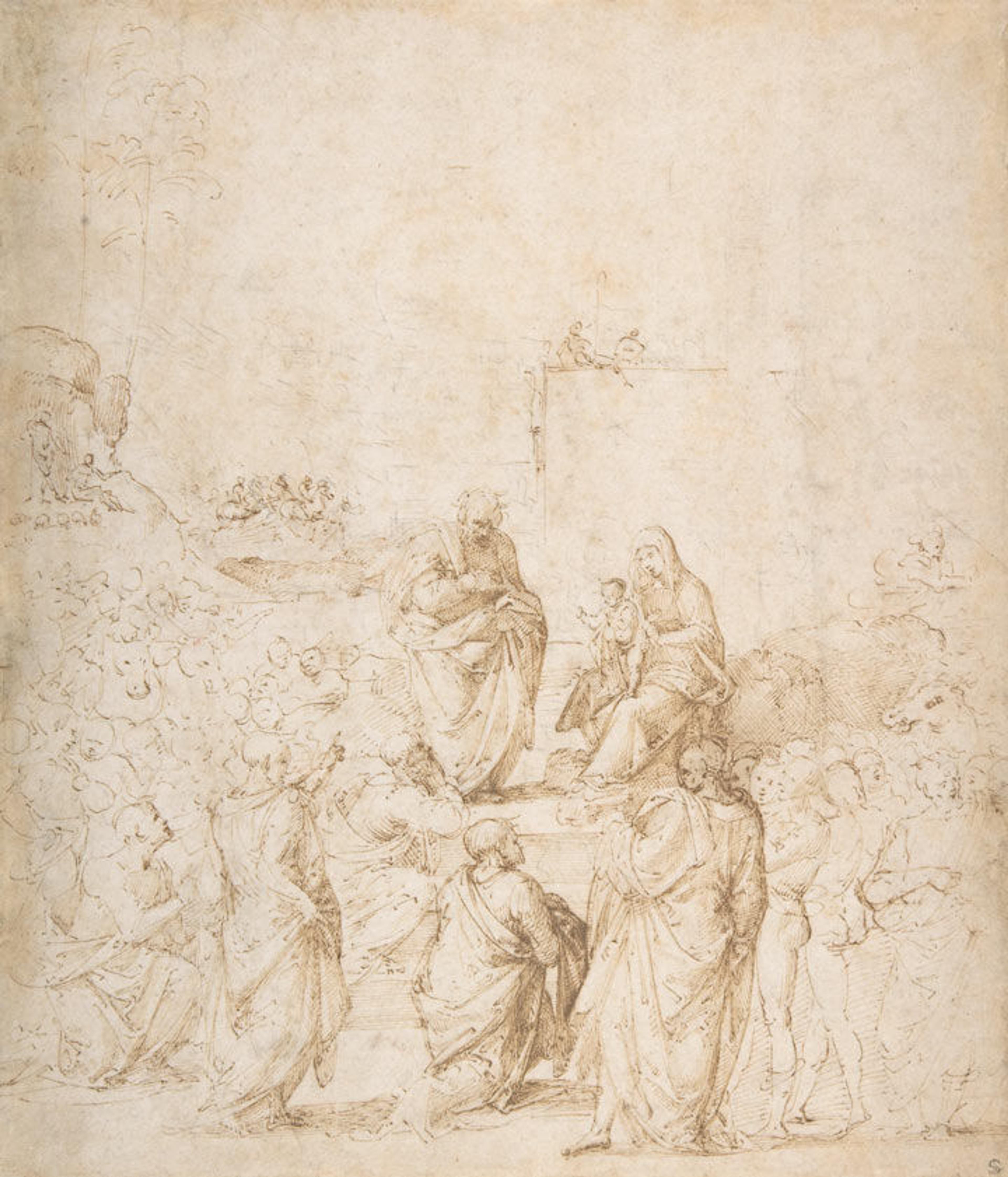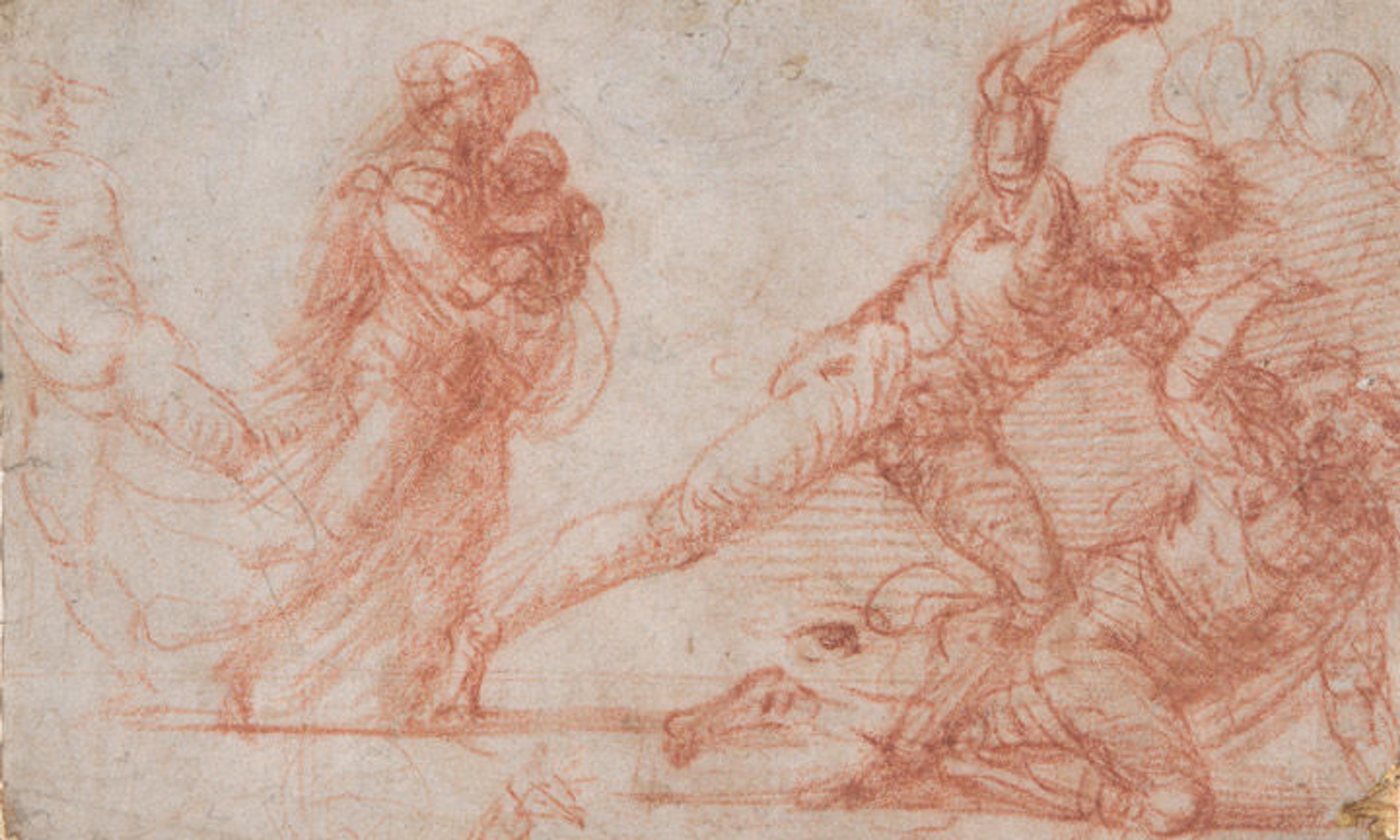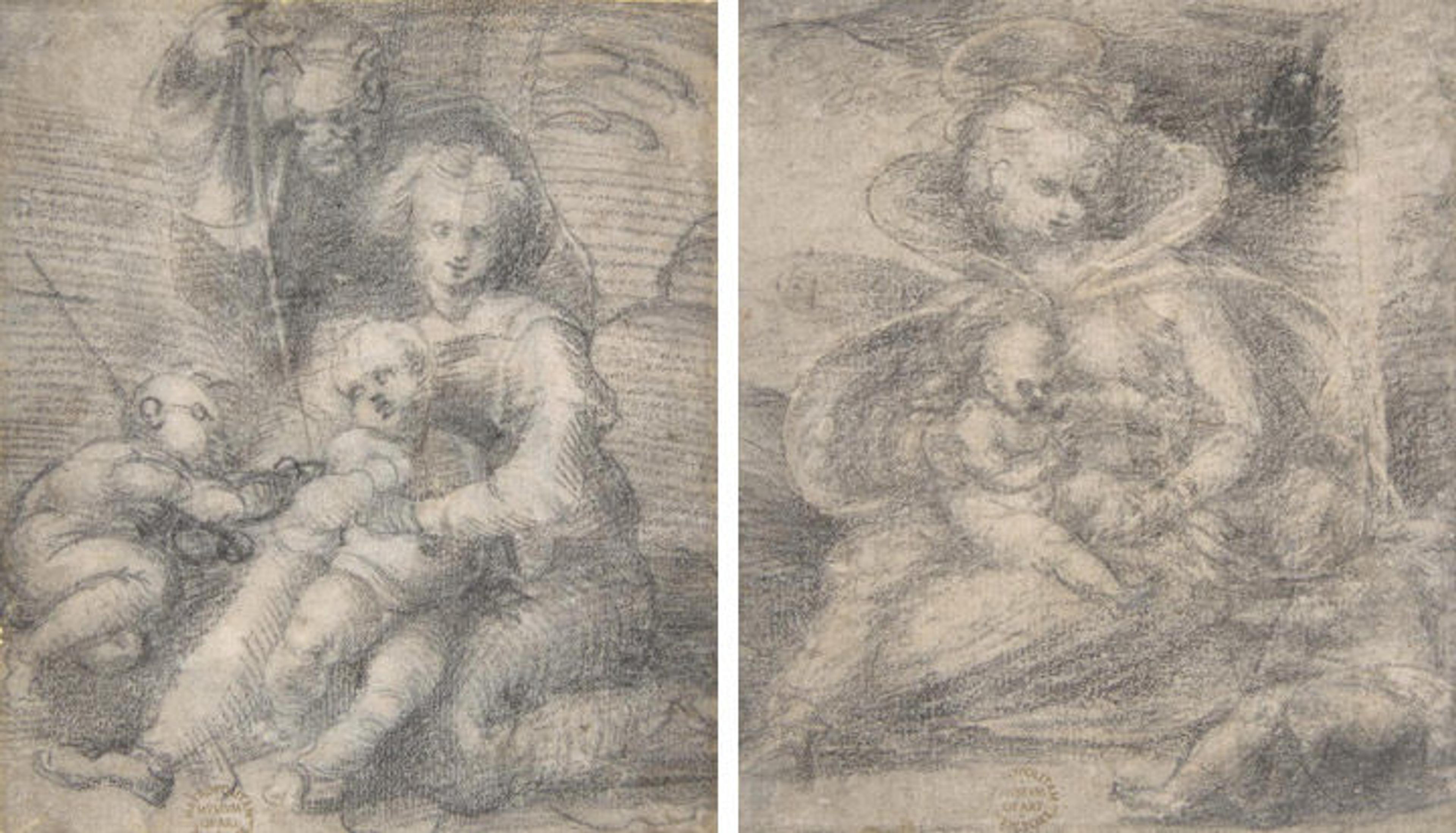Celebrating Fra Bartolomeo, Master Draftsman of the Renaissance

Fig. 1. Fra Bartolomeo (Bartolomeo di Paolo del Fattorino) (Italian, 1473–1517). The Adoration of the Magi, ca. 1500. Pen and brown ink, over traces of black chalk, 10 15/16 x 9 7/16 in. (27.8 x 24.0 cm). The Metropolitan Museum of Art, New York, Bequest of Walter C. Baker, 1971 (1972.118.241)
«A selection of drawings from The Met collection currently on view in the Robert Wood Johnson, Jr. Gallery celebrates the draftsmanship of Fra Bartolomeo (1473–1517), one of the great artists of the Italian High Renaissance, on the occasion of the 500th anniversary of his death. Active in Tuscany during the late 15th and early 16th centuries, Fra Bartolomeo had an iconic style that soon became synonymous with early 16th-century Florentine painting. His career was interrupted briefly in 1500 when the artist, then known as Bartolomeo di Paolo (nicknamed Baccio della Porta), became a Dominican monk and joined the Florentine convent of San Marco. Fra Bartolomeo returned to painting in 1504 as head of the small but successful convent workshop. The artist's affiliation with the Dominicans—a religious order particularly devoted to preaching—explains his memorably eloquent use of gesture in his compositions.»
While best known for his serene religious works executed for churches and important private patrons, he was also a highly experimental and innovative draftsman whose skills were admired by his peers. His work influenced many young artists, including Raphael (1483–1520), who carefully studied and absorbed the purity and linear simplicity of Fra Bartolomeo's graphic vocabulary. The works currently on view explore the broad range of the artist's style and technique, from ambitious compositional studies—often drawn by employing wooden models or puppets—to detailed figure and landscape studies.
In The Adoration of the Magi (fig. 1), one of the artist's early drawings, the Holy Family appears on a raised platform: the seated Virgin holds the Christ Child on her knee and the pensive Saint Joseph stands at left. The Magi are grouped at the foot of the steps leading to the platform. Fra Bartolomeo's composition was inspired by portrayals of the Adoration of the Magi by Leonardo da Vinci and Botticelli, which were characterized by a similar pyramidal grouping. Although this ambitious composition was never brought to completion as a painting, the artist's design was later used with slight modifications for a panel now in the Brooks Museum of Art in Memphis, Tennessee, where it is attributed to Antonio di Donnino del Mazzieri (ca. 1490–1547), but is almost certainly the work of Fra Bartolomeo's follower Giovanni Antonio Sogliani (1492–1544).

Fig. 2. Fra Bartolomeo (Bartolomeo di Paolo del Fattorino) (Italian, 1473–1517). Madonna and Child with the Infant Saint John the Baptist and Two Putti (recto), 1505–6. Pen and brown ink, touches of brown wash, highlighted with white gouache (partly oxidized), over traces of black chalk, on tinted paper, 7 3/8 x 6 7/16 in. (18.7 x 16.3 cm). The Metropolitan Museum of Art, New York, Robert Lehman Collection, 1975 (1975.1.271)
Fra Bartolomeo's drawing Madonna and Child sheds light upon his practice of employing wooden models or puppets, revealed here in the Virgin's unarticulated hands and the arm of the Christ Child, which is truncated at the wrist. The 16th-century biographer Giorgio Vasari stated that "in order to depict draperies and weapons and other such things, [Fra Bartolomeo] had a life-size wooden model made that had movable joints; and this he clothed with real draperies, from which he painted the most beautiful things, being able to keep them in position as long as he wished, until he brought his work to perfection." This sheet likely served as an exploratory idea for a composition rather than a preparatory study for a particular painting.

Fig. 3. Fra Bartolomeo (Bartolomeo di Paolo del Fattorino) (Italian, 1473–1517). Landscape (Wooded Approach to a Town), ca. 1508. Pen and brown ink, 8 7/16 x 11 1/2 in. (21.4 x 29.2 cm). The Metropolitan Museum of Art, New York, Bequest of Walter C. Baker, 1971 (1972.118.239)

Fig. 4. Fra Bartolomeo (Bartolomeo di Paolo del Fattorino) (Italian, 1473–1517). A Small Town on the Crest of a Slope, ca. 1508. Pen and brown ink, 11 x 8 9/16 in. (27.9 x 21.7 cm). The Metropolitan Museum of Art, New York, Rogers Fund, 1957 (57.165)
Fra Bartolomeo's celebrated landscape studies were drawn directly from nature, and rank among the earliest examples of this genre in Renaissance Italy. Confining himself to the use of pen and ink, he employed a great variety of strokes—from dots to dashes to hatchings—in order to convey the textures and details of the Tuscan landscape. The Florentine artist also used blank spaces of paper to great effect in expressing the expansiveness of his subject. While the artist appears to have drawn the landscape in figure 3 principally for his own pleasure, as an exercise rather than a preparatory study for a painting, the second sheet (fig. 4) was later adapted for the background in his painting of the Adoration of Christ Child now in the collection of the Art Institute of Chicago.

Fig. 5. Fra Bartolomeo (Bartolomeo di Paolo del Fattorino) (Italian, 1473–1517). Figures Fighting (Study for the Rape of Dinah [?]), ca. 1510–15. Red chalk, 4 13/16 x 8 in. (12.2 x 20.3 cm). The Metropolitan Museum of Art, New York, Partial and Promised Gift of Herbert Kasper, 1999 (1999.300)
The energetic sketch Fighting Figures was likely realized in preparation for a painting that is now lost, but was still recorded in an early replica made by Fra Bartolomeo's pupil Giuliano Bugiardini (1475–1577) (now in Vienna's Kunsthistorisches Museum). The subject is identified as the Rape of Dinah, described in Genesis (34:1–31). Dinah's brothers, the sons of Jacob, slayed the Hivites as retribution for her rape. Fra Bartolomeo created the dramatic scene—one that was extremely rare in Italian Renaissance art—using only a vibrant red chalk and focusing in particular on the movement of the figures and on their classical proportions.

Left: Fig. 6. Workshop of Fra Bartolomeo (Bartolomeo di Paolo del Fattorino) (Italian, 1473–1517). The Holy Family with Infant Saint John the Baptist, ca. 1515. Black chalk, 5 7/16 x 4 3/4 in. (13.8 x 12.0 cm). The Metropolitan Museum of Art, New York, Gift of Cornelius Vanderbilt, 1880 (80.3.135). Right: Fig. 7. Workshop of Fra Bartolomeo (Bartolomeo di Paolo del Fattorino) (Italian, 1473–1517). The Virgin and Child, ca. 1515. Black chalk, 5 5/8 x 4 9/16 in. (14.3 x 11.6 cm). The Metropolitan Museum of Art, New York, Gift of Cornelius Vanderbilt, 1880 (80.3.134)
Conceived for a private devotional panel around 1515, the sheets with The Holy Family and The Virgin and Child, both accompanied by the infant Saint John the Baptist, were quickly drawn in black chalk. They were formerly part of the same sketchbook that likely also included a drawing of almost the same size for a Madonna and Child with the Infant Saint John now in the Morgan Library & Museum, New York. Even though the drawings show similarities with Fra Bartolomeo's shorthand, the three sketchbook sheets should be attributed to a talented member of his workshop, possibly the monk Fra Paolino da Pistoia (1488–1547), who inherited his master's drawings and cartoons at his death in 1517. Visible in the background of the first composition (fig. 6) is the trunk of a palm tree, a narrative detail indicating that the scene takes place after the Holy Family's arrival in Egypt (Matthew 2:13–23). The pyramidal structure of both compositions and the use of blended black chalk to create atmosphere are signs of Fra Bartolomeo's admiration for the graphic work of Leonardo da Vinci.
Fra Bartolomeo's drawings will be on view at The Met through January 30, 2017, in conjunction with the large overview exhibition devoted to the master draftsman, Fra Bartolomeo: The Divine Renaissance, organized by Museum Boijmans Van Beuningen in Rotterdam, The Netherlands.
Related Links
Drawings and Prints: Selections from The Met Collection, on view at The Met Fifth Avenue through January 30, 2017
Now at The Met: Marjorie Shelley, "Mannequins: A Tool of the Artist's Workshop" (April 21, 2016)
Furio Rinaldi
Furio Rinaldi is a research assistant in the Department of Drawings and Prints.